Human Orbital Spaceflights
![]()
International Flight No. 251STS-118Endeavour (20)119th Space Shuttle missionUSA |
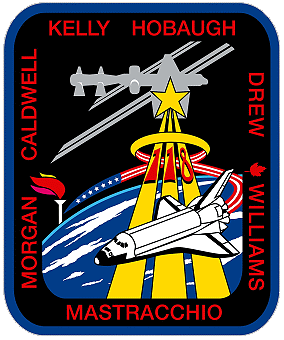 |
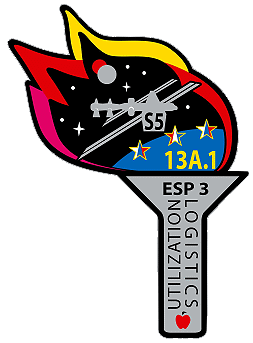 |
 |
||
![]()
Launch, orbit and landing data
walkout photo |
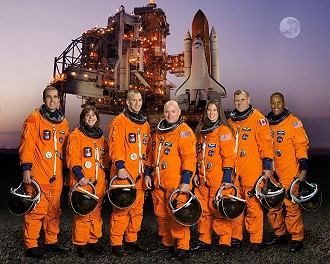 |
|||||||||||||||||||||||||||||||||
alternative crew photo |
alternative crew photo |
|||||||||||||||||||||||||||||||||
alternative crew photo |
alternative crew photo |
|||||||||||||||||||||||||||||||||
alternative crew photo |
||||||||||||||||||||||||||||||||||
Crew
| No. | Surname | Given names | Position | Flight No. | Duration | Orbits | |
| 1 | Kelly | Scott Joseph | CDR | 2 | 12d 17h 55m 34s | 201 | |
| 2 | Hobaugh | Charles Owen "Scorch" | PLT, RMS | 2 | 12d 17h 55m 34s | 201 | |
| 3 | Caldwell | Tracy Ellen | MS-1, IV-1, RMS | 1 | 12d 17h 55m 34s | 201 | |
| 4 | Mastracchio | Richard Alan "Rick" | MS-2, EV-1, FE | 2 | 12d 17h 55m 34s | 201 | |
| 5 | Williams | Dafydd Rhys "Dave" | MS-3, EV-2 | 2 | 12d 17h 55m 34s | 201 | |
| 6 | Morgan | Barbara Radding "Barby" | MS-4, RMS | 1 | 12d 17h 55m 34s | 201 | |
| 7 | Drew | Benjamin Alvin, Jr. | MS-5 | 1 | 12d 17h 55m 34s | 201 |
Crew seating arrangement
|
 |
|
||||||||||||||||||||||||||||||||
Hardware
| Orbiter : | OV-105 (20.) |
| SSME (1 / 2 / 3): | 2047-2 (10.) / 2051-2 (6.) / 2045-2 (9.) |
| SRB: | BI-130 / RSRM 97 |
| ET: | ET-117 (SLWT-27) |
| OMS Pod: | Left Pod 03 (31.) / Right Pod 04 (27.) |
| FWD RCS Pod: | FRC 5 (20.) |
| RMS: | 201 (18.) |
| EMU: | EMU No. 3015 (PLSS No. 1015) / EMU No. 3017 (PLSS No. 1017) |
Flight
|
Launch from Cape Canaveral (KSC) and
landing at Cape Canaveral (KSC), Runway 15. Astronaut Clayton Anderson originally was slated to be launched to the ISS on this mission, but was moved to STS-117. His replacement was Alvin Drew. NASA press releases and media briefing documents stated that STS-118 was the first flight of a Mission Specialist Educator due to the presence of Barbara Morgan. The Educator Astronaut Project is the successor to NASA's Teacher in Space Project, which ended with the Space Shuttle Challenger disaster in 1986. Also, the official STS-118 mission patch included a flame of knowledge that represented the importance of education, and honored teachers and students everywhere. The tip of the flames touched Barbara Morgan's name on the patch. The launch had been delayed 24 hours the week before to get back on schedule after unexpected work to replace a suspect valve in the shuttle's crew cabin pressurization system. The STS-118 (ISS 13A.1 SH-LSM ITS-S5) mission delivered and assembled the starboard S5 truss segment of the International Space Station, as well as External Stowage Platform 3, (ESP-3) and a replacement Control Moment Gyroscope (CMG). The mission was also the final flight to include the Spacehab Logistics Single Module. The mission also featured the first flight of the new Station-to-Shuttle Power Transfer System (SSPTS), a series of electrical converter units in the shuttle that draw electricity from the station's power system to supplement the normal electrical output from the shuttle's three cryogenic fuel cells. The new capability is designed to extend the shuttle's stay at the station to up to 12 days, if necessary, without depleting the finite electrical capability of the fuel cells themselves. The SSPTS routes power through Pressurized Mating Adapter-2 (PMA-2), the docking port for Endeavour at the forward end of the station's Destiny Laboratory. SSPTS consists of two Power Transfer Units (PTUs) in the shuttle, containing three converters per unit, two Orbiter Power Conversion Units (OPCUs) and one Assembly Power Conversion Unit (APCU). S5 is part of the 11-segment integrated truss structure (ITS) and the third starboard truss element to be delivered. Without S5, one quarter of the space station's power cannot be realized. The ITS forms the station's backbone with mountings for unpressurized logistics carriers, radiators, solar arrays and various other elements. S5 was attached to the Starboard 4 (S4) truss element via the Modified Rocketdyne Truss Attachment System (MRTAS) interface. S5 is used primarily to connect power, cooling lines and serve as a spacer between the S4 photovoltaic module (PVM) and Starboard 6 (S6) PVM, which will be joined during a later assembly mission. S5 is very similar in construction to the long spacer located on S6. Without the S5 short spacer, the S4 and S6 solar arrays would not be able to connect due to the way the photovoltaic arrays (PVA) are deployed on-orbit. The girder-like structure is made of mostly aluminum and provides several extravehicular aids, robotic interfaces, ammonia servicing hardware (as part of the Station's External Active Thermal Control System that allows ammonia fluid to transfer from S4 to S6) and can also accommodate an external storage platform. The Enhanced Universal Trunnion Attachment System (EUTAS) allows platforms to be attached to S5 for the storage of additional science payloads or spare Orbital Replacement Units. S5 also has white thermal blankets on the structure, which help shade the S4 Solar Array Assembly ORUs. S5 was transferred using the shuttle arm from the payload bay to the Space Station Robotic Manipulator System (SSRMS) where it was placed into the install or soft-dock position. While being moved on the SSRMS, S5 will have about two inches (5 centimeters) of clearance as it passes the S4 Sequential Shunt Unit (SSU). The truss element is installed robotically with help from crew members. During the first spacewalk, astronauts will use the MRTAS to connect S5 to S4 by using their portable hand tools to drive in four 3/4-inch (1.9 centimeter) diameter primary bolts in each corner. If a primary bolt cannot be secured, two contingency bolts at each corner on S5 can be tightened into the nut assemblies on S4. Another unique feature of S5 is the Photovoltaic Radiator Grapple Feature (PVRGF). For launch, the PVRGF is stowed on top (zenith) of S5 and is used by the shuttle and station robotic arms to grab S5 and pull it out and attach it. After S5 is attached to S4, the PVRGF will be relocated to the keel during the first spacewalk by using four fasteners. The PVRGF also is used to grapple the station's photovoltaic radiators (PVR) located on P3/P4, S3/S4, P6 and S6. The PVRGF can be used to replace a PVR, should they malfunction or become damaged from debris while on orbit. ESP-3 is an external pallet that can securely hold up to seven critical spare parts, or Orbital Replacement Units (ORUs), for the station. ESP-3 is the third in a series of external storage pallets transported to the station and will be attached to the Port 3 truss element. ESP-1 was installed to the station's U.S. Destiny Lab on STS-102/ 5A.1 in March 2001. ESP-2 was installed to the U.S. Airlock on STS-114//LF1 in August 2005. ESP-3 has six Flight Releasable Attachment Mechanisms (FRAM) to secure or release the ORUs and other equipment stored on it and an Ammonia Tank Assembly (ATA) Flight Support Equipment (FSE) directly mounted to a seventh site. Like ESP-2, the platform is derived from an Integrated Cargo Carrier (ICC), an equipment carrier designed for use in the shuttle's payload, and adapted for deployment on the station by developing a device to attach it to ISS structure. Right after arriving on orbit, Tracy Caldwell and Dafydd Williams captured video and digital stills of Endeavour's jettisoned external fuel tank for imagery analysis on the ground, the first in a series of iterative steps that will clear Endeavour's heat shield for a safe landing. On flight day 2 the shuttle crew spent most of the day inspecting the outer hull and the heat shield. During the mission status briefing, Deputy Shuttle Program Manager (and Mission Management Team chairman) John Shannon reported that during launch, approximately nine pieces of foam were observed breaking off the external fuel tanks. Three of these struck the shuttle. All three strikes are considered to be minor in nature. About 2.5 hours before docking, Endeavour's jets were fired during what is called the Terminal Initiation burn to begin the final phase of the rendezvous. Endeavour closed the final miles to the station during the next orbit. As Endeavour moved closer to the station, the shuttle's rendezvous radar system and trajectory control sensor tracked the complex and provide range and closing rate data to the crew. During the final approach, Endeavour executed several small mid-course correction burns that placed the shuttle about 1,000 feet (304.8 meters) directly below the station. STS-118 Commander Scott Kelly then manually controlled the shuttle for the remainder of the approach and docking. He stopped the approach 600 feet (182.9 meters) beneath the station to ensure proper lighting for imagery prior to initiating the standard R-bar Pitch Maneuver (RPM), or backflip. Scott Kelly maneuvered Endeavour through a 9-minute, 360-degree backflip that allowed the station crew to take as many as 300 digital pictures of the shuttle's heat shield. On verbal cue from Pilot Charles Hobaugh to the station crew, Scott Kelly commanded Endeavour to begin a nose-forward, three-quarter of a degree per second rotational backflip. Both the 400 and the 800 mm digital camera lenses were used to photograph Endeavour by station crew members. The 400 mm lens provides up to 3-inch (7.6 centimeters) resolution and the 800 mm lens can provide up to 1-inch (2.5 centimeters) resolution. The imagery included the upper surfaces of the shuttle as well as Endeavour's underside, capturing pictures of the nose landing gear door seals, the main landing gear door seals and the elevon cove. The photos were taken out of windows in the Zvezda Service Module using Kodak DCS 760 digital cameras. The imagery was one of several inspection techniques to determine the health of the shuttle's thermal protection system, including the tiles and reinforced carbon-carbon wing leading edges and nose cap. The photos were downlinked through the station's Ku-band communications system for analysis by systems engineers and mission managers. When Endeavour completed its rotation, its payload bay was facing the station. Scott Kelly then moved Endeavour to a position about 400 feet (121.9 meters) directly in front of the station in preparation for the final approach to docking to the Destiny docking port. The shuttle's crew members operated laptop computers processing the navigational data, the laser range systems and Endeavour's docking mechanism. Using a view from a camera mounted in the center of the Orbiter Docking System, Scott Kelly precisely matched up the docking ports of the two spacecraft. He temporarily paused 30 feet (9.14 meters) from the station to ensure proper alignment of the docking mechanisms. For Endeavour's docking on August 10, 2007, Scott Kelly maintained the shuttle's speed relative to the station at about one-tenth of a foot per second (3 centimeters per second) (while both Endeavour and the station were traveling at about 17,500 mph = 28,163 km/h), and kept the docking mechanisms aligned to within a tolerance of three inches (7.6 centimeters). When Endeavour made contact with the station, preliminary latches automatically attached the two spacecraft. Immediately after Endeavour docked, the shuttle's steering jets were deactivated to reduce the forces acting at the docking interface. Shock absorber springs in the docking mechanism dampened any relative motion between the shuttle and the station. Once the motion between the spacecraft had stopped, the docking ring was retracted to close a final set of latches between the two vehicles. Following a series of leak checks, the hatches were opened at 20:04 UTC, and the Expedition 15 crew welcomed the STS-118 crew aboard the station. Following Endeavour's docking to the station on flight day 3 and shortly after hatches were opened between the two vehicles, SSPTS was activated as two of the four OPCUs were turned on. The system was deactivated shortly before the first spacewalk on flight day 4 to enable the station's starboard solar arrays to be locked in place for the installation of the S5 truss. After that was completed, SSPTS was reactivated until Endeavour was ready to undock and the other two OPCUs were turned on and checked out. The Spacehab Logistics Single Module, a pressurized aluminum habitat that was carried inside the payload bay, had a capacity of 6,000 pounds (2,700 kg), and carried a variety of cargo and research projects, including supply materials for the ISS. It returned cargo, including the MISSE PEC 3 & 4, a Department of Defense payload that had been installed on the ISS. Launched in July 2006, the MISSE PEC-3 & 4 contained over 850 materials specimens that will be studied to determine the effects of long-term exposure to the environment of space. The first EVA by Richard Mastracchio and Dafydd Williams occurred on August 11, 2007 (6h 17m) to remove locks from the S5 that secure it during launch and lock it in place, relocate a radiator from its launch position to the bottom of the S5 to provide clearance for solar arrays to track the sun. During mission STS-120, the radiator will be relocated to its final position. While the EVA was underway, the primary command-and-control computer in the U.S. Destiny lab module unexpectedly shut down, but the two others worked on. The most important objective during EVA 1 was to install the S5 truss. One of the challenges that Charles Hobaugh faced was sliding the S5 spacer into its position using the station's robotic arm, known as the Space Station Remote Manipulator System. In a move similar to parallel parking in a snug space, the spacer came as close as 2.7 inches (6.9 centimeters) to the S4 truss. The two spacewalkers monitored structural clearances for the maneuver. Once the S5 was in position, Richard Mastracchio and Dafydd Williams removed the locks that secured it and S4 during launch. The truss was brought into "soft" capture position so that the crew could fasten the primary structural bolts. With the S5 secured, the two spacewalkers moved the Photovoltaic Radiator Grapple Fixture (PVRGF) from its launch location on top of S5 to the keel of the truss. The PVRGF is a handle that was used by the shuttle and station arms to move the truss. It was being relocated to provide enough clearance for the solar arrays to rotate and track the sun. The crew prepared the S5 for the future attachment of the S6 truss segment, connected six utility cables between S5 and S4, removed the S5 and S6 launch locks and opened the S5 capture latch assembly. Next, the two also monitored the retraction and cinching of the P6 photovoltaic radiator, readying it for the next shuttle mission. The retraction provided clearance for the robotic arm that was used when the S-band antenna sub-assembly (SASA) is moved during the third spacewalk. It was then decided to extend the mission for three days, because that for the first-time used Station-to-Shuttle Power Transfer System (SSPTS) worked well. SSPTS transfers electrical power from the station to the shuttle, allowing the shuttle to conserve its own power generating resources. It was also reported, that foam hit Endeavour heat-shield during launch. The thermal tile gouge almost reaches shuttle's skin. It was a small but deep, scooped-out pit in the heat shield. Another little damage was later found on the orbiters window. The second EVA was again performed by Richard Mastracchio and Dafydd Williams on August 13, 2007 (6h 28m) to move a failed control moment gyroscope (CMG-3) to an unpressurized platform that holds spare parts outside the station called External Stowage Platform-2 (ESP-2), a new platform, ESP-3, was added to the station (stored inside ESP-3 is a new gyro that the spacewalkers used to replace the failed one), disconnect ESP-3 power cables to prepare it for permanent relocation to the station. During the second spacewalk, Richard Mastracchio and Dafydd Williams removed and replaced a failed control moment gyroscope. The station's four CMGs provide primary attitude control for the station. CMG-3 suffered a mechanical failure in October 2006. The remaining gyroscopes have been providing attitude control since then, but all four CMGs will be needed as the station's integrated truss continues to expand. During the spacewalk, Richard Mastracchio and Dafydd Williams removed the failed CMG from the Zenith 1 (Z1) truss and temporarily stowed it on the truss. Then, the crew moved to the shuttle's payload bay and removed the new CMG from where it was stowed on external stowage platform-3 (ESP-3). The station's robotic arm was used to transfer the CMG to ESP-2, located on the starboard side of the Quest Airlock, to prepare it for installation on the Z1 truss. Once the new CMG was installed, the failed CMG was moved from the truss to ESP-2. The CMG was returned to Earth on a later mission. External stowage platforms are designed to hold Orbital Replacement Units, or ORUs, such as the CMGs. The two spacewalkers also installed the Z1 shroud, an embossed silver Teflon blanket that is used to protect the CMG from heat. Meanwhile Mission Specialist and educator astronaut Barbara Morgan along with other crew members held the first of three planned educational events. Twenty children from Boise in Idaho had the chance to ask different questions to Barbara Morgan and her crewmates. The third EVA by Richard Mastracchio and ISS Expedition 15 crew member Clayton Anderson occurred on August 15, 2007 (5h 28m) to prepare the relocation of the P6 truss segment on the STS-120 mission, move two equipment carts from the right to left side of the station and relocate an antenna and upgrade avionics and communication systems. The primary purpose of the third spacewalk was to prepare for the relocation of the P6 truss, planned for the STS-120 mission. One of the primary tasks was to relocate two crew and equipment translation aid (CETA) carts from the port side of the station's Mobile Transporter to its starboard side. This allowed the Mobile Transporter to move to the proper worksite when the P6 truss is relocated. During the spacewalk, Richard Mastracchio and Clayton Anderson also upgraded the port S-band communications system. Using the station's robotic arm, Charles Hobaugh moved the S-band antenna sub-assembly, or SASA, from the P6 truss to the P1. The two astronauts then installed a new S-band transponder and baseband signal processor to P1 and activated it. Together with the relocated SASA antenna, the new transponder and processor provided upgraded voice communications for the station. Richard Mastracchio and Clayton Anderson also retrieved the P6 transponder so that it could be returned to Earth where it will be upgraded and available for a future mission. They engaged the Z1 SASA gimbal locks to prepare them for the next. This EVA had to be shortened because of a damage to the left thumb of Richard Mastracchio's spacesuit glove. At no time was Richard Mastracchio in any danger, NASA said, but flight rules required Richard Mastracchio to end his spacewalking task as a precaution. Mission managers then decided that a repair spacewalk for small gouge on Endeavour's heat shield tiles will not be needed. The fourth and final EVA by Dafydd Williams and ISS Expedition 15 crew member Clayton Anderson was conducted on August 18, 2007 (5h 02m) to install support equipment on the S1 truss that will allow for an addition to the inspection boom during the STS-123 mission, and to install a system to provide better wireless video coverage during future missions. Dafydd Williams and Clayton Anderson installed orbital support equipment for the Orbiter Boom Sensor System (OBSS) on the S1 truss. This installation allowed the addition of a 50-foot inspection boom assembly (IBA) during STS-123. The boom assembly was used for heat shield inspections during the STS-124 mission. The OBSS provides the capability to inspect the shuttle for thermal protection system (TPS) damage and, if needed, to provide a platform to perform TPS repair during a spacewalk. The IBA will consist of two laser sensors, a special black and white TV camera (ITVC), an integrated sensor inspection system (ISIS) digital camera, a pan and tilt unit, two grapple fixtures, and EVA hand-holds. The crew also installed the S3 Wireless Video System External Transceiver Assembly (WETA) on camera port 1 on the S3 truss to provide better wireless video coverage during future missions. At undocking time, the hooks and latches were opened, and springs pushed the shuttle away from the station. Endeavour's steering jets were shut off to avoid any inadvertent firings during the initial separation. Once Endeavour was about two feet (61 centimeters) from the station and the docking devices were clear of one another, Charles Hobaugh turned the steering jets back on and manually controlled Endeavour within a tight corridor as the shuttle separated from the station. Endeavour moved to a distance of about 450 feet (137.2 meters), where Charles Hobaugh began to fly around the station in its new configuration. Once Endeavour completed 1.5 revolutions of the complex, Charles Hobaugh fired Endeavour's jets to leave the area. The shuttle moved about 46 miles (74 km) from the station and remained there while ground teams analyzed data from the late inspection of the shuttle's heat shield. The distance was close enough to allow the shuttle to return to the station in the unlikely event that the heat shield is damaged, preventing the shuttle's re-entry. Meanwhile it was also decided, to shorten the mission. The earlier landing opportunity was selected in the event hurricane Dean threatens the Houston area. |
EVA data
| Name | Start | End | Duration | Mission | Airlock | Suit | |
| EVA | Mastracchio, Richard | 11.08.2007, 16:28 UTC | 11.08.2007, 22;45 UTC | 6h 17m | STS-118 | ISS - Quest | EMU No. 3015 |
| EVA | Williams, Dafydd | 11.08.2007, 16:28 UTC | 11.08.2007, 22:45 UTC | 6h 17m | STS-118 | ISS - Quest | EMU No. 3017 |
| EVA | Williams, Dafydd | 13.08.2007, 15:32 UTC | 13.08.2007, 22:00 UTC | 6h 28m | STS-118 | ISS - Quest | EMU No. 3017 |
| EVA | Mastracchio, Richard | 13.08.2007, 15:32 UTC | 13.08.2007, 22:00 UTC | 6h 28m | STS-118 | ISS - Quest | EMU No. 3015 |
| EVA | Mastracchio, Richard | 15.08.2007, 14:37 UTC | 15.08.2007, 20:05 UTC | 5h 28m | STS-118 | ISS - Quest | EMU No. 3015 |
| EVA | Anderson, Clayton | 15.08.2007, 14:37 UTC | 15.08.2007, 20:05 UTC | 5h 28m | STS-118 | ISS - Quest | EMU No. 3008 |
| EVA | Williams, Dafydd | 18.08.2007, 13:17 UTC | 18.08.2007, 18:19 UTC | 5h 02m | STS-118 | ISS - Quest | EMU No. 3017 |
| EVA | Anderson, Clayton | 18.08.2007, 13:17 UTC | 18.08.2007, 18:19 UTC | 5h 02m | STS-118 | ISS - Quest | EMU No. 3008 |
Photos / Graphics
 |
 |
 |
 |
 |
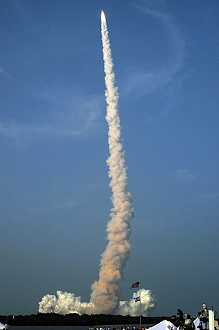 |
 |
 |
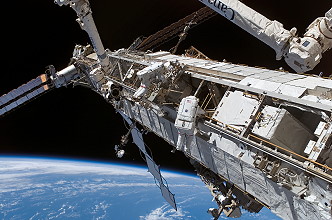 |
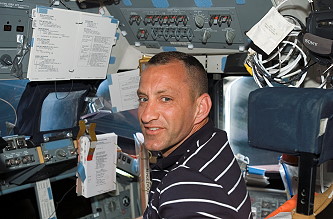 |
 |
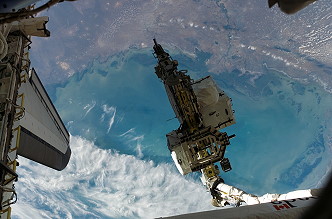 |
 |
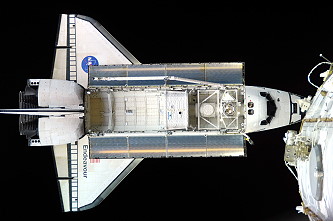 |
 |
 |
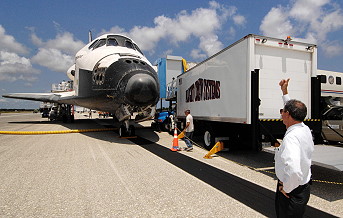 |
|
more EVA photos |
|
| © |  |
Last update on September 07, 2023.  |
 |